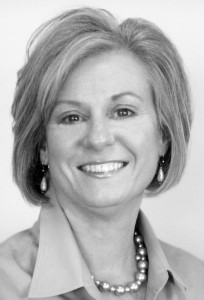By Christi Smith
Full sun, partial sun, full shade, moist soil, well drained area, deer resistant. These are all examples of instructions found on tags for how to care for and in what environment a gardener should place his plants.
Just as environment and care are essential to the growth of healthy plants, the same can be said for the workplace. As professionals, it’s important for each of us to understand the conditions and environments in which we—and our coworkers—are most successful. In a recent session of Leadership Kanawha Valley, I learned two important steps toward achieving this goal: first, know what you and your coworkers need to flourish. Second, place yourself, as well as others, in that appropriate environment.
As members of the Leadership Kanawha Valley 2013-14 class, we were encouraged to think about these steps in a class led by Doug Walters and Tony Marchese. The session focused on learning about strengths, social styles and “job fit” of individuals in an organization—whether it is a business, church, government, nonprofit or volunteer team—as well as discovering and understanding these things about yourself and those around you. Taking the time to realize what people need is the greatest transformation that can take place within an organization and can catapult it to its greatest potentials and successes.
Discovering my own needs was the first step for me, as I believe that transformation must take place in the leader before it can take place in the culture of an organization. In this journey of self-awareness, I asked Doug Walters to be my coach to aid with discovering my strengths, social styles, emotional intelligence and professional fit.
Through surveys answered by myself and others, he analyzed the information that revealed some answers and raised new questions about my leadership ability. I was not surprised to discover that my social style is a driver with strengths like achievement, positivity and strategy. After that, we focused on the new questions: what do those strengths mean; how can I use them and where will it be most beneficial for myself and my organization to grow? As a leader, it was refreshing to learn that my strengths are not something that can be classified as right or wrong and that in the right environment and circumstances, one can be very successful.
This journey has been—and continues to be—about understanding how to maximize these new self-discoveries while at the same time revealing personal areas of leadership concern. To clarify, being aware of weaknesses isn’t about making them into strengths but being aware so that they do not trip me up along the way. Like the information that comes with a plant, if you are aware that a plant will die in the shade, you transplant it to an area where it will receive direct sunlight.
Walters suggested that the key leaders I engage with daily also participate in the survey in order to learn their social styles. This discovery has helped me know what they need from me and understand where they are coming from when we communicate and begin projects together. Sharing our social styles with each other, along with an explanation about each one’s value, has provided a better understanding of each other as a whole. Several a-ha moments throughout my coaching sessions have given me positive affirmations about my uniqueness and what I bring to the table with an added appreciation for what others bring with them, as their strengths may be my weaknesses. A group of individuals working together gives a team or organization leadership balance while enhancing success.
My experience with the leadership class has brought a new understanding into our company, Royal Automotive. Royal Automotive is a family owned and operated business, opened in 1969, and has seen many transitions in the automotive industry, the local economy and within itself. The second generation owners have been blessed with an abundance of long-term employees, but many are beginning to consider retirement. This means there will be an organizational change, new team players, new possibilities and a need for discovery and understanding among the entire Royal Automotive team. Our company will continue to work with Walters as he helps us discover the key components for our leadership and the areas where these components have the most positive impact in our strategic planning and vision as we make this transition.
About the Author
 Christi Smith has a degree in marketing from David Lipscomb University and now works for Royal Chrysler Jeep Subaru. She is married to Kelly Smith, who is also the owner of Royal Automotive, and they have one son, Casey. Smith is constantly pursuing education in leadership as an effort to grow in business and continue to be a positive influence both at work and at home.
Christi Smith has a degree in marketing from David Lipscomb University and now works for Royal Chrysler Jeep Subaru. She is married to Kelly Smith, who is also the owner of Royal Automotive, and they have one son, Casey. Smith is constantly pursuing education in leadership as an effort to grow in business and continue to be a positive influence both at work and at home.









One Response
Well written Christi! Proud of you!